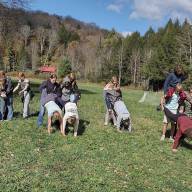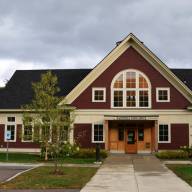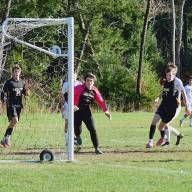The Harwood Unified Union School District’s finance committee discussed the future of school district sports with athletic director Ian Fraunfelder, with an eye for taking potential cost savings measures for the FY2027 budget year.
At the committee’s January 13 meeting, Fraunfelder offered a brief slide deck outlining savings that could be realized by shifting some sports programming from in-school to community-based rec programs. HUUSD offers 18 sports and has 46 teams between varsity, junior varsity, high school, middle school and boys and girls’ teams.
Some sports, he said, specifically middle school offerings such as soccer, basketball and softball could be transitions from school-based to recreation programs. Specifically, he detailed how moving middle school basketball to mini-metro program could save $25,098 (when bussing is included). Moving gymnastics to such a program would save $16,435. Moving middle school soccer to a rec program could save $22,450.
OPPORTUNITIES
Fraunnfelder said shifting sports out of the school would still provide opportunities to kids to participate and he said the school would prioritize access to its own recreation facilities including fields and indoor courts to accommodate other organizations offering programming.
He said he has discussed middle school soccer with Mad River Valley Soccer and the Waterbury Rec department and said Mad River soccer would be willing to accommodate Valley and Waterbury students.
Some sports, Fraunfelder said, such as alpine skiing take place primarily off site and the district could consider whether they should be moved away from a school-based program. He said new alpine skiing uniforms would soon be needed at a cost of $600 per uniform for 20 to 25 uniforms.
OFF-SITE
School board chair Ashley Woods, Warren, asked if there was a reason alpine skiing was mentioned, considering the district’s location relative to skiing in Vermont and Fraunfelder said it was one of the sports that takes place off-site and one of the less mainstream sports. Finance committee chair and board member Mike Bishop, Fayston, asked if alpine skiing would be considered for non-school programming with the district in ski towns.
“I feel like that’s why people move here. There are lots of jobs here. It would be like Colchester cutting their bass fishing program,” he said.
Fraunfelder said he could get firmer numbers on ski programs and acknowledged “we are a ski community. And if people want to ski, they can and will find ways to ski.”
Woods agreed. “A lot of kids do ski through Sugarbush and GMVS programs.”
Last year there were 17 student athletes on the alpine team and 35 on the Nordic team.
Moretown board member Steve Rosenberg asked about costs to parents of eliminating ski programs and Fraunfelder said families are already absorbing those costs for kids who are already on the slopes. The HUUSD savings, he said, would be in coaching and transportation and per event fees as well as uniforms.
DEEP CONCERNS
Board member Dan Roscioli, Waterbury, said that he talked to Waterbury Rec Department personnel as well as some Harwood coaches and heard deep concerns about planning and the fact that they hadn’t been involved I any of these preliminary discussions.
He said he was hearing that it was too late in the budgeting process for any other organizations to include expansion like this in their work plans for 2026.
“They’re open to the idea but have concerns about equity in terms of what families can afford when activities that are free through school, with no transportation issues, move outside of schools. They’re open to the idea but need to be involved in the discussions,” Roscioli said.
The group discussed why moving sports out of the schools and into the community was being discussed instead of, for example, moving other district expenses such as groundskeeping and some transportation to the towns.
DEVELOPMENTAL
Other concerns were that middle school sports often functions as a transition from played-based sports to more competitive sports and moving middle school sports might impact an important developmental phase for students.
With Fraunfelder, the finance committee discussed options such as moving Harwood athletes to other schools’ teams, discussing off-sitting middle school sports with other school districts, looking at the expense of Harwood’s ice hockey programs, including ice time in Waterbury, the concept of pay to play sports and also offering needs-based scholarships to cover fees associated with community-based sports programming.
Fraunfelder said that removing hockey from school-based sports would leave 42-43 kids without a way to play their sport because there are no community- based programs and they would have no opportunity to play.
HUUSD finance director Lisa Estler reminded the committee that these are preliminary ideas and part of the school district turning over every stone in terms of examining costs and keeping the district’s per pupil spending from hitting the state’s excess spending threshold and incurring penalties.













